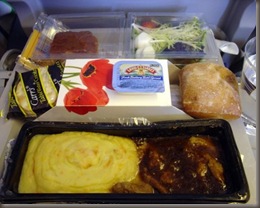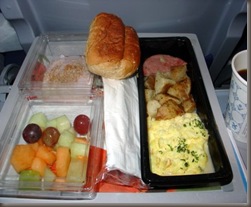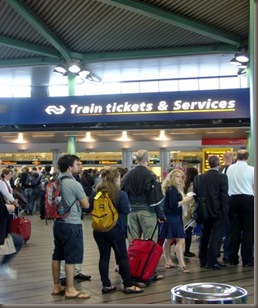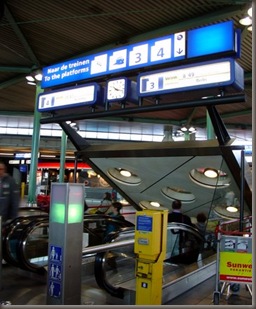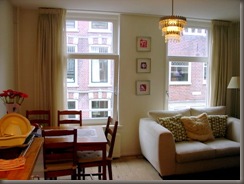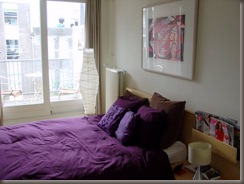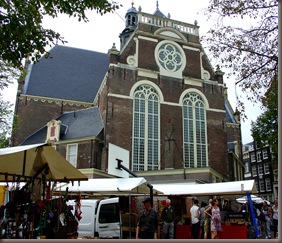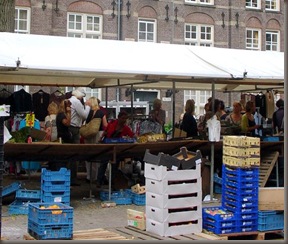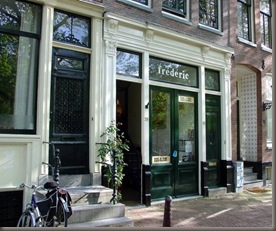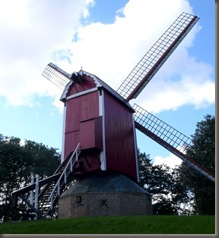
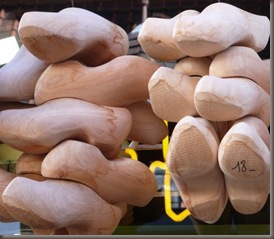
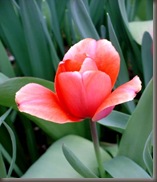
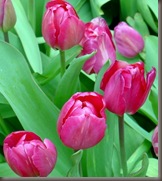
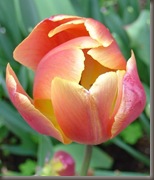
Sometimes our ideas about a place are so strong, that we confuse the dream with the reality, until we actually go there and see it. All of us would agree that Holland is a country full of dykes and windmills, wooden shoes and tulips, but there’s much more to it than that and I’m proposing a few new images to add to the icons we normally conjure up when we think of the Netherlands or Amsterdam in particular. None of the above photos were taken in Holland. The windmill and wooden shoes were seen and photographed in Bruges Belgium and the tulips are from my garden in San Francisco, although the bulbs were from Holland. In truth, I have never personally seen a windmill in Holland, but it’s still the first place I think of when I do see one.

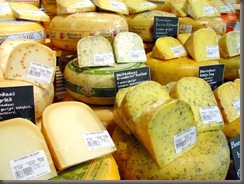
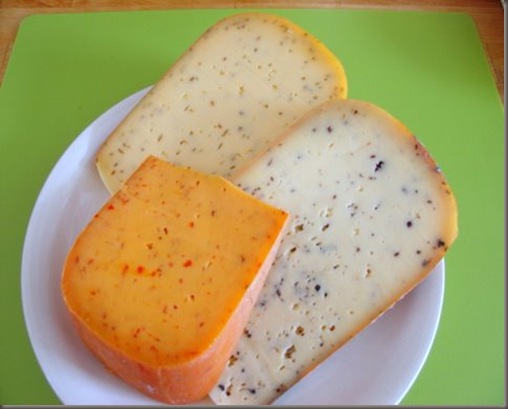
Say cheese! Of course we think of Edam and Gouda when thinking of Dutch cheese, but the selection is so much broader. It was an astonishing variety and I did my very best to sample it, keeping my selections to the unfamiliar. Whether in open air markets, specialty shops or grocery stores, local cheese was available everywhere. Admittedly, I wasn’t looking for foreign imports and cannot be relied upon as an authority, but I saw very little of them besides some soft cheese from France. What I did see was cow and goat milk cheese from Holland, including many flavored varieties. The cheese in the photo above represented a decent sampling of flavored varieties. Lower left was a spicy cheese flavored with Sambal, the Indonesian, chili based hot sauce. The next going clockwise was a cheese flavored with cumin seeds. I’ve seen this at home and it’s called Leyden in the U.S. but I didn’t see that name in Amsterdam. The cheese to the far right flavored with bits of black truffle was certainly not new to me as I’ve eaten it many times in Italy and at home, but I was curious about the Dutch version. Magnificent, perhaps better than the Italian version!
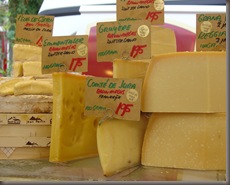
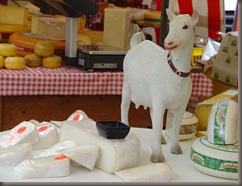
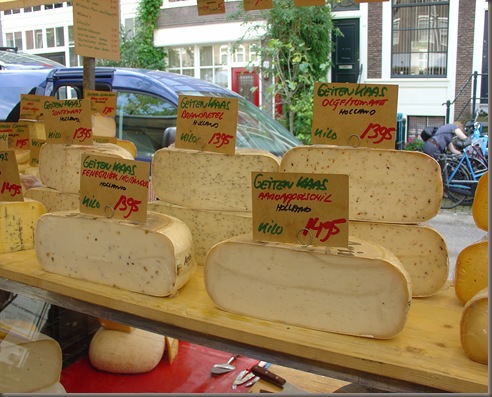
I’ll make a liar out of myself, here are imported cheeses from France Switzerland and Italy, in the upper left photo. Thankfully, I took enough photos to prove that they do exist, but still they are only secondary to the local cheese. I obviously cannot rely on my memory. You really cannot misidentify the goat cheese, can you? I always giggle a bit when I see props for identification purposes; then I wonder if there is a small child somewhere, still pining away for their toy goat or sheep. The Dutch cheese in the lower photo is flavored with fenugreek, coriander, and sundried tomatoes to name a few items, but I saw wasabi, dill, black pepper, basil and other herbs used frequently. I did try a wasabi flavored cheese on this trip, but felt it was a bit timid in flavor and should have been bolder.
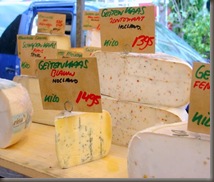
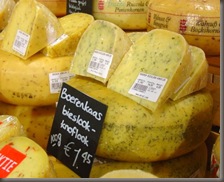
Wondering what Geiten Kaas means? All the cheese with that name is made from goat’s milk. Boeren Kaas is a farmer’s cheese made from cow’s milk and if you want an artisanal gouda, look for that name attached or you’ll end up with a factory made cheese.
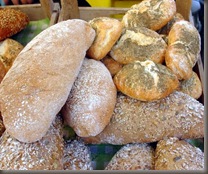
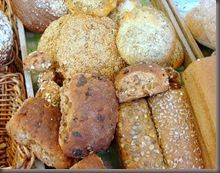
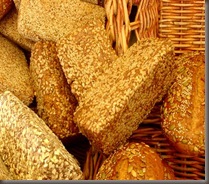
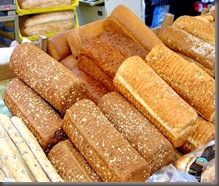
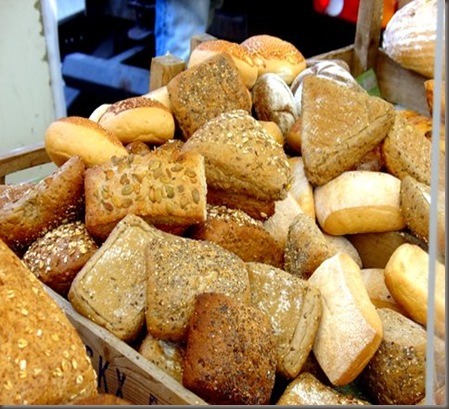
What is cheese without bread? I don’t think I have ever seen a collection of breads and rolls as large as the ones I saw at several stands at the Lindengracht Saturday Market in the Jordaan. Grains of all sorts were employed with a broad variety of nuts and seeds. Everything looked so appealing that I walked through the market twice before I attempted to buy any of it. As I talked to the young woman at one stand, she volunteered some interesting information, saying that some of the breads took 3 days to bake. It may have had more to do with rising time than actual baking time, because many of the multigrain breads were very dense.
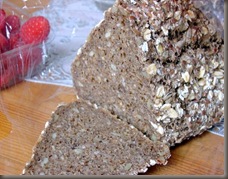
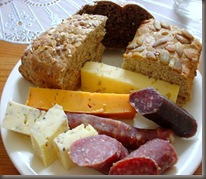
Of the breads that I tasted, my favorite was a three sided, highly dense, rye bread filled with sunflower seeds and rolled in oats. It was rustic and very flavorful and was tasty on its own, but it was even more wonderful with cheese. One had to wonder how a bread like this could be found outside of Holland. I doubt that even artisanal producers in the U.S. would spend three days on a loaf. Fantasizing for several minutes about how I would use it at home satisfied me enough that I could stop thinking about it. The three rolls that I tried were not dense at all, in fact, they were lighter than most breads made from the same grains. We ate them with some cheese and sausages that were also purchased at the Lindengracht Market. Most of the dry sausage being sold seemed to be imported. The dark one on the left was made from Water Buffalo and had a distinctly sweet taste, the thin sausage was made with garlic and rosemary, while the thicker one was flavored with Herbs de Provence. Judging by their cost, $15 for three small sausages, they must have been imported.
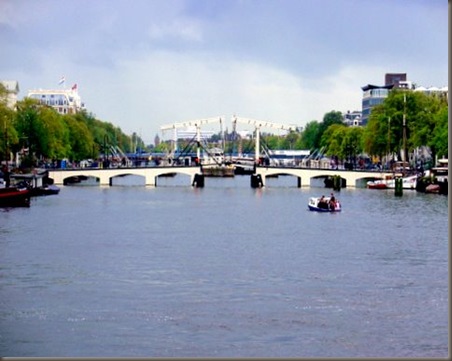
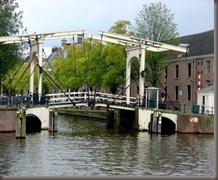
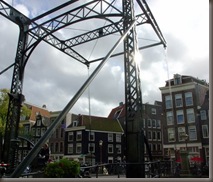
Tinker Toy or Erector Set reminiscent bridges set this canal filled city apart from the others I’ve seen. Their distinctive mechanisms for opening to let boat traffic through is fascinating. The top photo is taken from the Blauw Brug, the “blue bridge”, a long, elegant bridge that spans the Amstel river between Rembrandtplein and Waterlooplein. Here are 3 small photos of it:
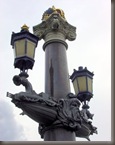

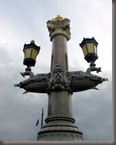
But back to the top photo of the long, white bridge; it depicts the longest wooden bridge in the city, made of exotic hardwoods and still opened by hand, to allow barges to go up river. Megere Brug, the “thin bridge”, built in the 17th century is nicely emulated by the smaller version, in the lower bridge photo on the left, that sits along a small canal leading into the Amstel just below the Blauw Brug. The green, iron bridge on the lower right is in the Jordaan on Oranjerie and spans the Brouwersgracht Canal that I encourage you to visit because of its lovely homes in converted warehouses.

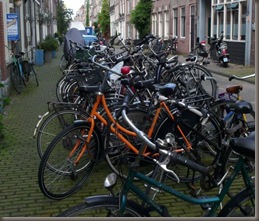
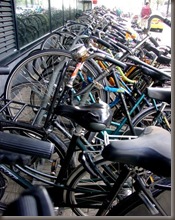
If these photos of bicycles don’t convince you of their place in the Dutch lifestyle, then a thousand words won’t do any better! These were not only the commuter bicycles near the train station, but bicycles that covered the sidewalk near our rented apartment. You could see bicycles chained to every bench, every bridge rail and everything else that was small enough to get a bike lock around. We were told that many of the bicycles were abandoned, but how will anyone ever know which ones to eliminate? The ones with bent wheels would be likely candidates along with the rusty bicycles. I’ve concluded that the city should declare a bike census day and create more room for itself.
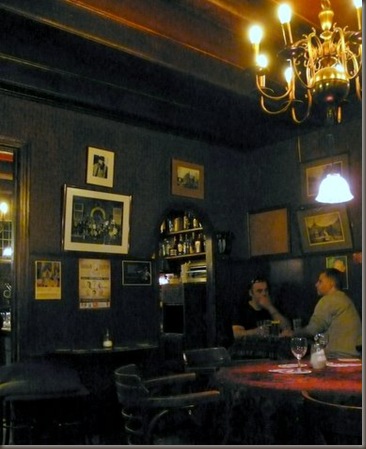
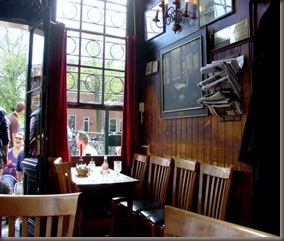
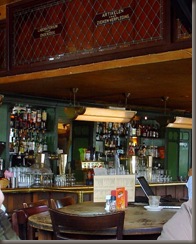

The Brown Cafe is another staple of the Amsterdam lifestyle. It’s not one place but many, all over the city. Called brown because most of their walls are typically brown from centuries worth of tobacco smoke, these neighborhood gathering places serve drinks, light snacks, desserts and beer. One that caught my eye had the tables covered with Persian style carpets. According to an antique seller I met at the Waterlooplein flea market, many years ago, smaller carpets and runners were traditionally used on tables. This was the only example I found of that tradition on this trip, and it brought back fond memories for me. On my first trip to Europe I bought an identical small carpet, along with several others, while in Amsterdam. I rolled them up, wrapped them in paper and slung them over my shoulder with the assistance of some twine. That’s how I brought them home, and by the time we took our last train ride, I could barely get through the aisles with my load of souvenirs, becoming a great source of amusement for some passengers, and a danger to be avoided by others. I never did use them in the traditional way, but they brought me much pleasure and became a source for my own amusement.
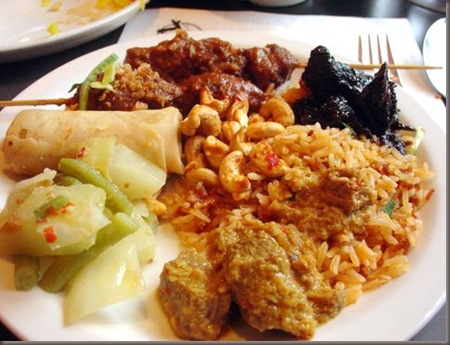
As long as I’m reminiscing, I have one more iconic item and another travel story. In one word…Rijstaffel. The histories of Holland and Indonesia have been intertwined for so long, the traditional “rice table” composed of Indonesian specialties has become standard fare in Holland. For a complete review of this restaurant, follow this link for Kantjil En De Tijger.
On my first trip to the Netherlands with a college friend, we were on a tight budget. We were traveling for six weeks and needed to be conservative with our cash, because neither of us had a credit card. By the time we arrived in Amsterdam we decided to tighten our belts and save some money. We ate hearty breakfasts at the B&B and bought fruit and other inexpensive items from grocery stores. It was getting cold one night, so we decided to splurge and buy a hot meal. We spotted a restaurant that had a sign in front describing it as “Asian”, so it was our intention to buy 2 items to share. After looking through the menu, we settled on a plate of “fried rice” to share. It was the cheapest thing on the menu and we could ill afford anything else. We believed that this was the most expensive “Chinese” restaurant either of us had ever been to. The large plate of rice arrived and it was rather plain, but they brought a few little dishes of condiments to go along with it. The waitress started coming back with more small plates of stewed meats, vegetables and egg rolls. I was compelled to notify her that we had not ordered that food, but she wouldn’t take it back. Did I mention a language problem? The waitress spoke no English and neither did any other staff members. We spoke only English and Spanish. Come to think of it, fried rice may have been the only English on the menu. I was on pins and needles trying to prepare myself for the fight that certainly would ensue when we refused to pay for anything we had not ordered; difficult work for one who hates confrontation. As we discovered when the bill arrived, with the same price as on the menu, we were in an Indonesian restaurant and all the plates came with the rice. Our very expensive “fried rice” became an inexpensive rijstaffel and a very memorable meal.


Coffee, anyone? The number of coffee houses selling marijuana in Amsterdam must have doubled since the last time I was visiting. It was astonishing to find them on so many corners, even in the residential areas. But since there’s a market for them, I suspect they will continue for quite some time. They may not be growing in numbers going forward, since a recent law has been adopted that forces them to refuse service to foreign nationals, or at least not allow tourists to purchase their most profitable item.
This made me curious enough to ask one proprietor how that might affect his future business. His answer was matter of fact, he didn’t see any problem after the law became implemented in January 2012. Either he saw few tourists, or he wasn’t planning on abiding by the new law. Asking was a little too intrusive, so I left it at that. Since the law is going to be costly to enforce, I suspect many shop owners will be carrying on business as usual. How would that law be enforced? Would patrol officers start demanding identification from customers?

One thing I noticed about the new coffee shops was their lack of 1970’s pop culture décor. Many looked like, well, coffee shops you’d see anywhere. The little green sign in the photo above is so subtle it could easily be missed. Gone is the need to attract customers with psychedelic light shows or op art. No more gaudy store fronts with bean bag furniture and old sofas. Some were actually attractive and showed a slight sophistication. Recreational drug use has “grown up” and beyond the exuberance and hubris of youth . One thing that has not changed was the menu item of fresh squeezed orange juice. I don’t see the connection, but judging by the number of stands at the markets, fresh squeezed orange juice is a big deal in Amsterdam.

